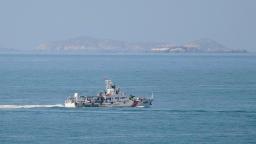Indonesia sends warship to monitor Chinese coast guard vessel | CNN


Indonesia has deployed a warship to its North Natuna Sea to monitor a Chinese coast guard vessel that has been active in a resource-rich maritime area, the country’s naval chief said on Saturday of an area that both countries claim as their own.
Ship tracking data shows the vessel, CCG 5901, has been sailing in the Natuna Sea, particularly near the Tuna Bloc gas field and the Vietnamese Chim Sao oil and gas field since December 30, the Indonesian Ocean Justice Initiative told Reuters.
A warship, maritime patrol plane and drone had been deployed to monitor the vessel, Laksamana Muhammad Ali, the chief of the Indonesian navy, told Reuters.
“The Chinese vessel has not conducted any suspicious activities,” he said. “However, we need to monitor it as it has been in Indonesia’s exclusive economic zone (EEZ) for some time.”
A spokesperson for the Chinese Embassy in Jakarta was not immediately available for comment.
The United Nations Convention on the Law of the Sea (UNCLOS) gives vessels navigation rights through an EEZ.
The activity comes after an EEZ agreement between Indonesia and Vietnam, and approval from Indonesia to develop the Tuna gas field in the Natuna Sea, with a total estimated investment of more than $3 billion up to the start of production.
In 2021 vessels from Indonesia and China shadowed each other for months near a submersible oil rig that had been performing well appraisals in the Tuna block.
At the time, China urged Indonesia to stop drilling, saying the activities were happening in its territory.
Southeast Asia’s biggest nation says that under UNCLOS, the southern end of the South China Sea is its exclusive economic zone, and named the area as the North Natuna Sea in 2017.
China rejects this, saying the maritime area is within its expansive territorial claim in the South China Sea marked by a U-shaped “nine-dash line,” a boundary the Permanent Court of Arbitration in the Hague found to have no legal basis in 2016.





